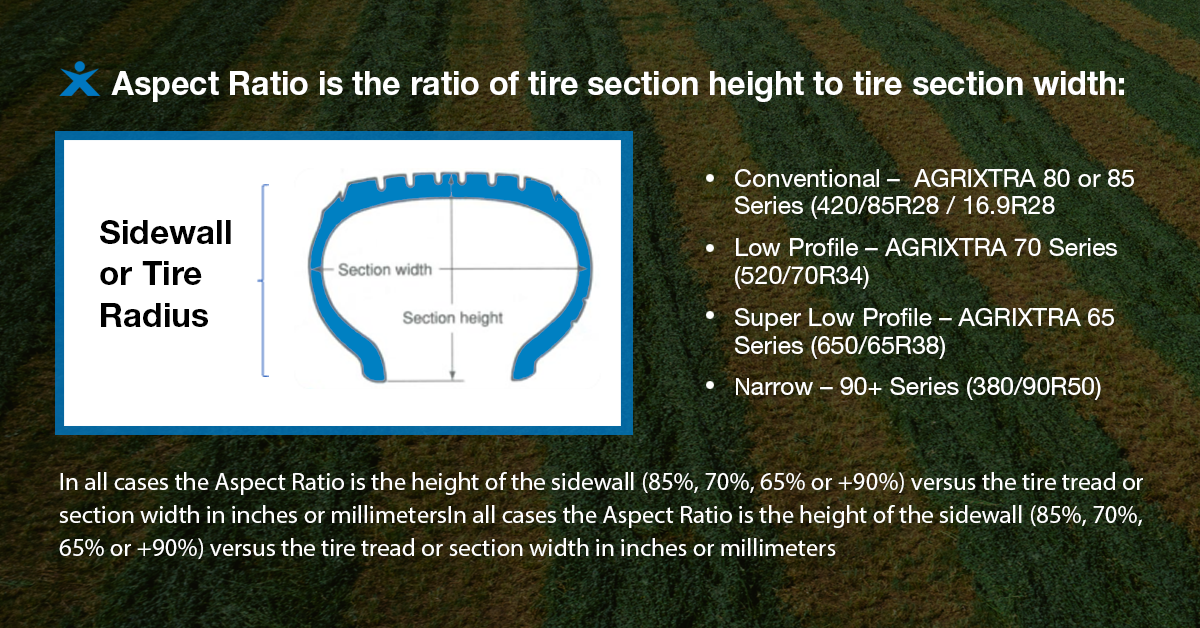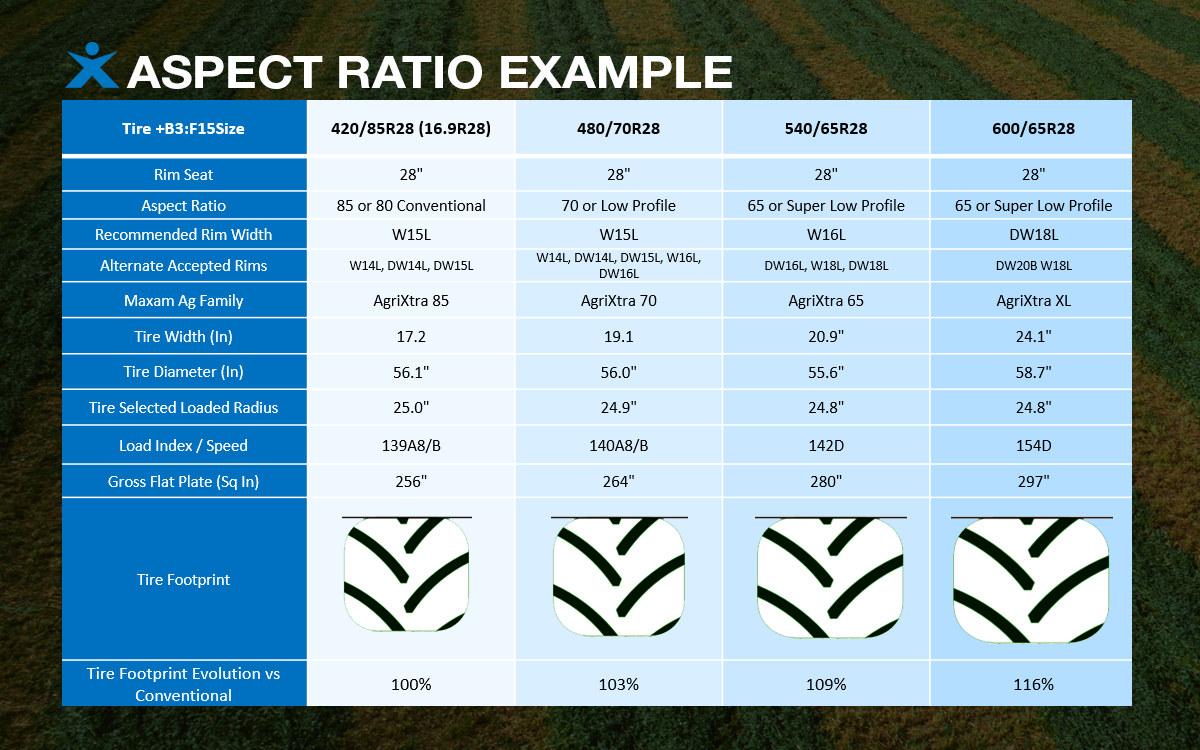MAXAM on Rim Width Impact on Tire Radius, Traction, and Flotation
AG Technical Bulletin – Why do tire manufacturer recommended wheel widths vary, what impact does variance have on tire radius, traction, and flotation?
All Agricultural tires either of radial construction or bias conventional construction are designed by size to fit on a certain rim seat. Depending on the equipment design or need, rims also are made in various widths to allow the tire under load to drive or steer the vehicle and provide the best load-carrying capability.
In the last article, we reviewed that radial tire construction accounts for 20% of the carcass load or pressure on the soil, while the compressed air in the tire chamber accounts for 80% of the carrying capacity. Therefore the key to a tire successfully carrying the load and delivering the expected performance is the capability of the air in the tire to suspend the load and allow the tire sidewall deflection or “Tire Bulge” under a given load to push the tire footprint to deliver the rim pull or torque to move in the desired direction.
By convention and industry agreement, tires must conform to international standards to be of a certain geometry or tire size. Depending on the desired or designed tire geometry tires are grouped in the below tire Aspect Ratio or families of sizes.

of the tire on the wheel or rim. In simple terms, the size of the tire in terms of the width or sidewall height determines the size of the air chamber or capability of the tire to carry the desired load or increased load. As the Original Equipment Manufacturer’s never-ending quest for improved productivity via the evolution to larger machinery, tire geometry has had to evolve to meet the demand for more load, speed, and traction.
Outlined in the table below you can see a group of four tires that have the same outer diameter and proposed rim or wheel. The table details a comparison in terms of their geometry (width & diameter), aspect ratio, load-carrying capability, sidewall radius, and footprint:

In each case, as the tires grow in aspect ratio or width their tire radius and diameter remain almost the same. However, the larger geometry or larger footprint (Gross Flat Plate) delivers improved flotation and increased traction. These changes in tire geometry also result in a larger air chamber that provides increased load carrying capacity supported by the larger tire footprint ultimately delivers improved traction, fuel efficiency, and productivity. The farmer or grower that chooses to change to a wider tire as proposed in the above comparison must ensure that the equipment has the recommended or alternative wheel widths to support the tire size selected as proposed by the tire manufacturer.
Each tire manufacturer should offer a recommended wheel width with acceptable alternative wheels or rim widths that allow their tire to deliver optimal performance. In the above comparison, all the tires have the same loaded tire radius, yet the resulting tire construction (based on aspect ratio, width, and diameter) delivers different load carrying capabilities because of the larger air chamber and footprint allowing more weight as well as greater power transmission. In every instance, a tire is a compromise that employs the tire geometry, materials, air chamber, and compressed air working together to deliver the best possible performance. For any farmer or grower, selecting the right wheel and tire combination will maximize his equipment’s performance by optimizing his load carrying capability while delivering the necessary power to plow, plant, harvest or spray his crops.
MAXAM agricultural tires are designed to deliver an optimized footprint ensuring the best possible traction and flotation for the grower’s powered and towed vehicle needs. MAXAM’s growing family of Radial and Bias-ply tires delivers performance solutions tailored for the agricultural Industry. Backed by a world-class warranty program our radial agricultural tires are designed to deliver the value our customers expect from MAXAM. Try the MAXAM Advantage in your field today!
For additional information, contact your local representative or visit us at maxamtire.com.



